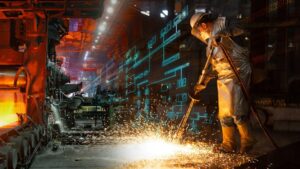
From time to time, video surveillance needs to be done in extreme environments, for example offshore drill sites or chemicals factories, which are subject to explosion and hot temperature. In these environments, cameras need special protection that the end user should know about.
For typical end user entities such as offices or retail shops, standard IP cameras can perform their functions well. However, monitoring certain factories, oil fields or other extreme environments calls for ruggedized, industrial-grade products that are explosion-proof, as any tiny spark generated by electronics equipment can result in dire consequences.
In fact, video surveillance in these environments represent a special niche whose growth potential is quite significant. According to Allied Market Research, the global market for explosion-proof equipment is expected to hit US$8.2 billion by 2022, registering a compound annual growth rate of 9.3 percent between 2016 and 2022.
“Surveillance and monitoring systems have witnessed noteworthy growth in the explosion proof equipment market, owing to their increased adoption in oil and gas, pharmaceutical, chemical and other explosion-prone industries. These devices when installed in the most challenging and hazardous areas can deliver accurate track of crane loading and other critical operations and prevent explosion,” the report said. “North America is expected to dominate the global market throughout the analysis period, registering a notable CAGR of 8.4 percent.”
1. What to know about explosion-proof cameras
Explosion-proof cameras include special enclosures that protect the camera. These cameras have three characteristics:
• They keep the gas and dust out of the container that holds the camera. Gaskets are used to seal any openings including where the cables enter. Usually, it also means that the housing is pressurized, so there is a positive pressure between the inside and outside of the housing.
• They assure that even if the gas enters and causes an internal explosion, the damage is confined to the inside of the enclosure.
• They assure that the outside temperature of the enclosure is less than 80 percent of the auto-ignition temperature of the specific gas or vapor in the room.
For end users, it’s also important to know whether their cameras systems follow certain standards certifying products are explosion-proof. These standards include UL’s class and division system for products in hazardous locations, as well as EU’s ATEX directive.
In the UL system, Class I specifies flammable gases, flammable liquid-produced vapors and combustible liquid-produced vapors; Class II combustible dusts; and Class III Ignitable fibers/flyings. Division 1 indicates ignitable concentrations of flammable gases, flammable liquid-produced vapors, or combustible liquid-produced vapors can exist under normal operating conditions, and Divison 2 indicates those substances are not likely to exist under normal operating conditions.
ATEX covers a range of products, including those used on fixed offshore platforms, petrochemical plants, mines, and flour mills, amongst others. The directive defines the essential health and safety requirements and conformity assessment procedures, to be applied before products are placed on the EU market.
2. High-temperature camera systems
Meanwhile, monitoring high-temperature areas may sometimes be necessary for end users. The viewing of these areas, such as inside a blast furnace, requires special protection that includes liquid-cooled enclosures.
High-temperature environment enclosures can operate in extremely hot environments such as blast furnaces, or rocket test viewing. These extreme environment enclosures are constructed from electro-polished stainless steel and consists of a body with a double chamber for the circulation of a cooling liquid or air. One example of an enclosure uses quartz glass and liquid cooling. It can protect the camera in working environments up to 400°C (752°F).
Source: a&s Magazine



































































